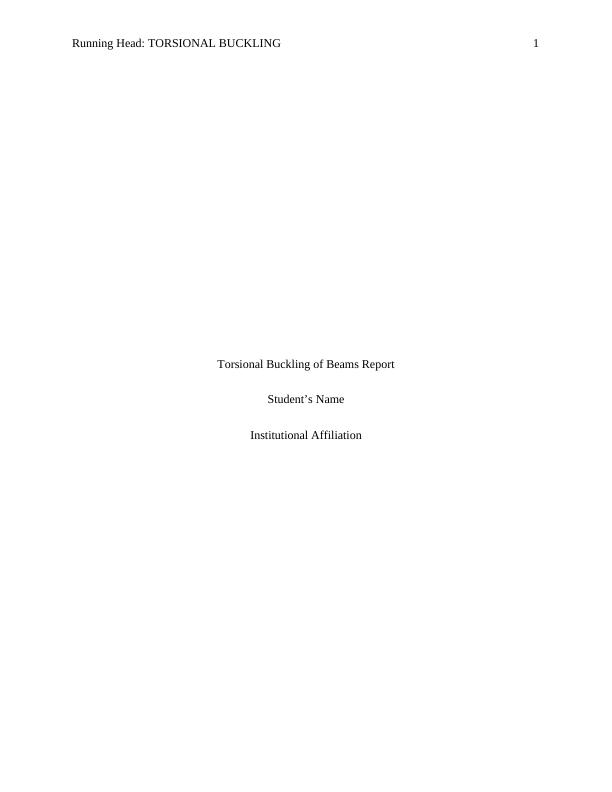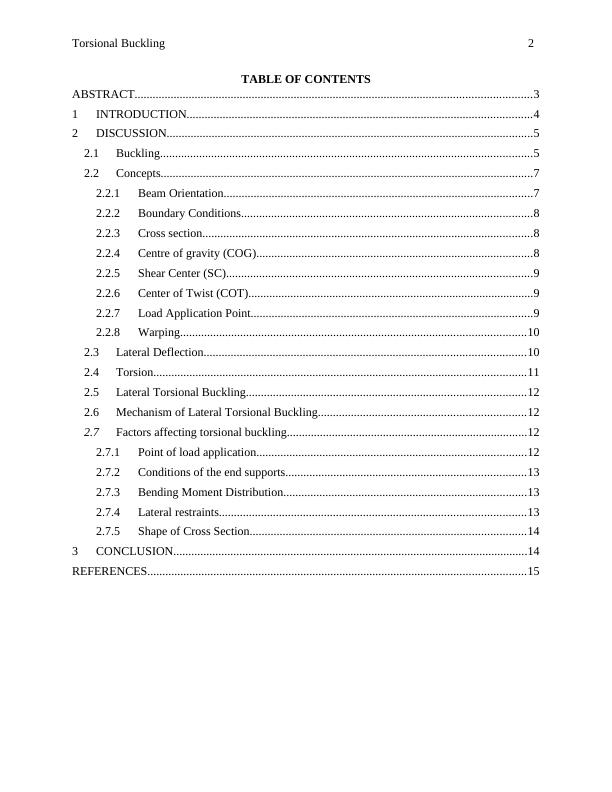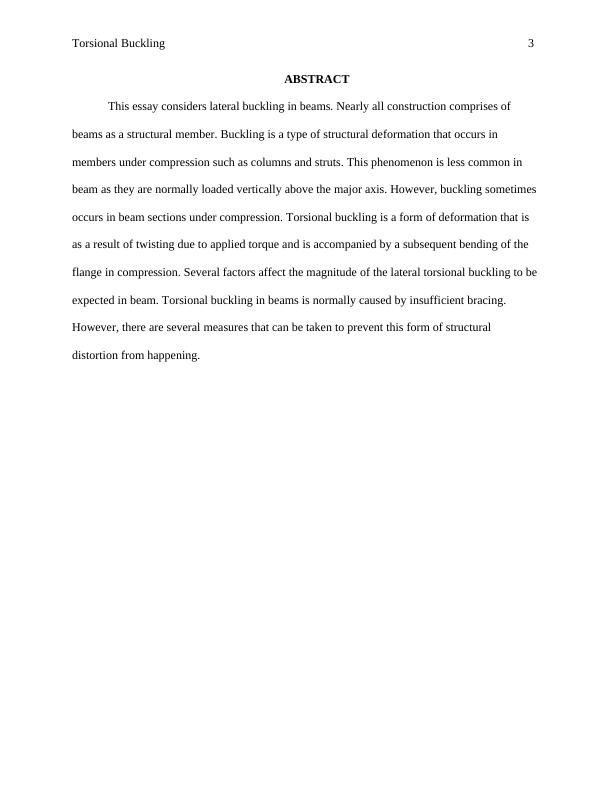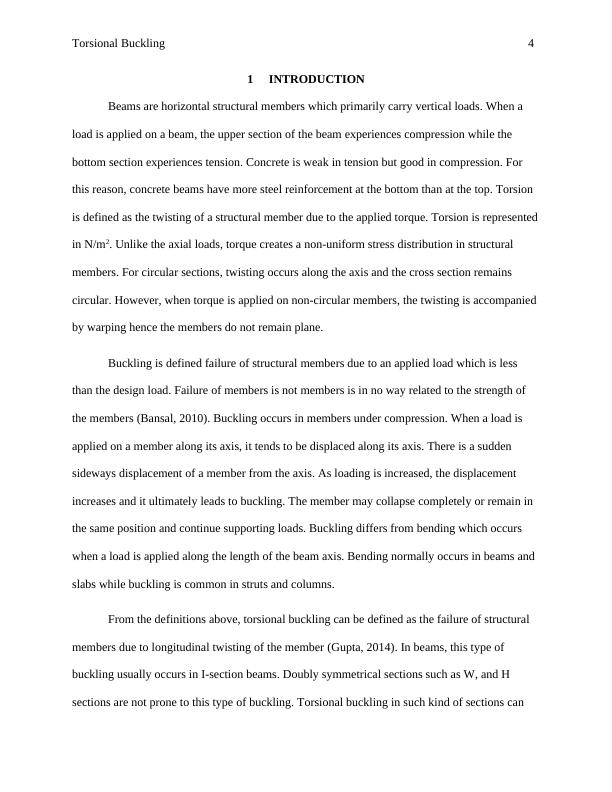Torsional Buckling of Beams Report
16 Pages3450 Words209 Views
Added on 2023-06-04
About This Document
This essay considers lateral buckling in beams. Torsional buckling is a form of deformation that is as a result of twisting due to applied torque and is accompanied by a subsequent bending of the flange in compression. Several factors affect the magnitude of the lateral torsional buckling to be expected in beam.
Torsional Buckling of Beams Report
Added on 2023-06-04
ShareRelated Documents
End of preview
Want to access all the pages? Upload your documents or become a member.
Torsional Buckling of Beams Paper Assignment
|14
|3321
|158
Experimental Analysis of Lateral Torsional Buckling of Beams with Selected Cross-Section Types
|12
|2391
|206
Mechanics of Solids Report
|4
|594
|311
Beams under Bending Loads: Comparison of Theoretical and Numerical Solutions
|12
|2687
|28
Behavior and Failure Mechanism of Modern and Ancient Arches
|11
|2810
|338
Mechanical Principles: Static and Dynamic Mechanical Systems, Damped Vibrations, and Mechanical Power Transmission
|19
|1935
|80




